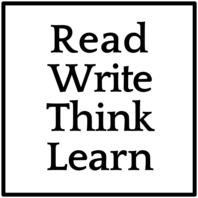In the latest NAPLAN results, Tasmania, the Australian Capital Territory, and the Northern Territory found themselves without a single school in this year’s coveted and much-reported “Top 100 schools list”. For many in these communities, this revelation has sparked questions about their education systems, the work of teachers, and broader implications of poor literacy and numeracy skills.
In this post, I delve into the nature of lists like the “Top 100 schools” to shed light on whether education ministers, school leaders, and teachers in some states and territories should be losing sleep over this phenomenon.

What Does It Mean to Be in the “Top 100”?
For a school to be ranked in the highest scoring 100 primary or secondary schools means it has outperformed the vast majority of Australian schools when you lump together the scores of all their students across all five domains of NAPLAN (i.e., reading, writing, spelling, grammar and punctuation, and numeracy). This does not say a great deal about individual student performance (you can have high-scoring students at any school) but simply reflects a given school’s average score across all tests for all its students.
As I’ve discussed in research articles and other blog posts (like this one), it’s worth noting that schools with more female students have tended to fare better statistically when you aggregate all students and scores in this way. This is because four of the five NAPLAN domains test literacy skills, and there are substantial gender gaps in favour of girls for all literacy tests (a phenomenon found in countries across the world). More girls generally mean higher average literacy scores for schools, resulting in higher aggregate NAPLAN scores.
So which Schools Tend to Make the Cut?
Perhaps unsurprisingly, given their populations of ~8.3 million and ~6.8 million respectively, New South Wales and Victoria dominate every year’s “Top 100 schools list”. For 2023, these states accounted for 86 of the top primary schools and 79 of the top secondary schools. Queensland and Western Australia fought for the scraps (with just 6 of the highest-scoring primary schools each, and Queensland having 12 of the highest-scoring secondary schools compared with 8 in WA). South Australia snuck in with a couple of primary schools and one secondary.
Dominating the list each year are elite private schools and selective public schools. Elite private schools can charge upwards of $50k per child per year in NSW and VIC and this quite remarkable level of resourcing affords smaller class sizes and (as many of their websites suggest) more differentiated and personalised learning. Selective public schools are free to attend but only admit the highest achieving children from a given community (hence being selective). This enrolment process results in schools made up of essentially only high-achieving children, leading to higher-than-usual results on NAPLAN for these schools when all students are lumped together.
Meanwhile, Tasmania, the Australian Capital Territory, and the Northern Territory have historically struggled to secure spots in such top school lists. This can be explained by various factors, with the most obvious being their minuscule populations (~572k, ~466k, and ~252k respectively), private schools with comparatively low fees and resourcing, and the absence of selective schools that filter in the “best and brightest”.
Tasmania and the Northern Territory also face several contextual challenges, making their absence from top 100 lists easier to understand. With smaller populations comes fewer high-performing students pushing up the topmost extreme. Moreover, the prevalence of students attending schools in regional, rural, and remote communities, who statistically perform lower than their urban counterparts, further impacts the overall NAPLAN outcomes of schools in these areas.
“Top 100 schools” lists
With all this said, should there be concerns everywhere apart from NSW and VIC about lists like this each year? I don’t think so. For a school to make the grade in a region that does not have the most elite of private schools or selective schools would be quite remarkable when you consider the schools with which they are competing.
Personally, I think ACARA’s list of high-performing schools in each state and territory is more useful than the top 100, since this does take into account socio-educational advantage to highlight the schools around the country that are punching above their weight classes when it comes to NAPLAN outcomes.
Given that many education departments, Catholic Education Offices, and independent schools around the country have recently implemented policies that reflect decades of research into effective literacy and numeracy instruction, it will be interesting to see whether the results of these changes flow through to higher NAPLAN scores from next year.

Brliant idea to include the audience students are addressing in their persuasive text just like the NSW HSC modern languages provide in their writing tasks, SEE HSC GERMAN paper.
Year 3 and 5 students ha e not been tested inpersuasive NAPLAN tests and must be taught beforehand whom you are persuading.